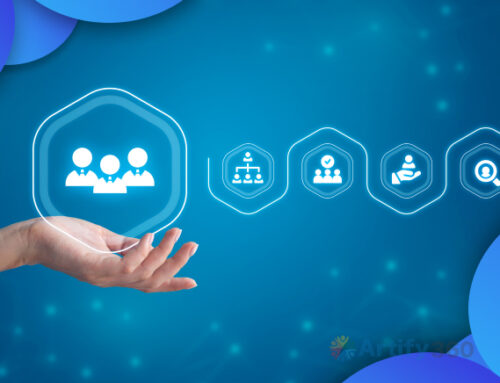Managing payroll for a remote workforce on a large scale presents unique challenges and opportunities. In today’s digital age, organizations are increasingly embracing remote work arrangements. With the right strategies, remote payroll management can be efficient and effective.
This article explores key strategies for handling payroll for a distributed workforce. We’ll discuss how technology, automation, compliance, and communication play pivotal roles in ensuring accurate and timely payroll processing while meeting the needs of a remote workforce. Whether you’re an HR manager or a business owner these insights will help you navigate the world of remote payroll management.
Challenges in managing the payroll of remote employees
Managing payroll for a remote workforce comes with its own set of challenges. These challenges often revolve around ensuring accuracy, compliance, and seamless processes in a distributed work environment. Here, we will explore the common challenges associated with remote payroll management.
- Varying legal and tax regulations:
One significant challenge is navigating the different tax laws and labor regulations in various locations where remote employees are based. This complexity can result in errors if not properly addressed. - Data security:
With sensitive employee information being accessed from different locations, data security becomes a paramount concern. Safeguarding personal and financial data from cyber threats is crucial. - Accurate time tracking:
Monitoring hours worked by remote employees can be challenging, especially when they are in different time zones. Ensuring that time and attendance records are accurate is essential for fair compensation. - Communication and support:
Remote employees may require more support and communication regarding payroll-related queries. Managing these inquiries efficiently and promptly is crucial to ensure employee satisfaction. - Integration and data consolidation:
Remote payroll often involves integrating multiple systems and data sources, which can lead to discrepancies if not managed properly. Streamlining data from different sources is a common challenge. - Payroll distribution:
Getting paychecks to remote employees can be cumbersome. Traditional methods may not work efficiently, and organizations must find secure and timely means to deliver payments. - Compliance reporting:
Reporting for tax and labor law compliance can be intricate, with remote employees scattered across various locations. Ensuring that the company complies with regulations is a considerable challenge. - Record keeping:
Maintaining comprehensive records for remote employees can be more complex than for in-house staff. Keeping track of time-off requests, benefits, and other HR-related data is a substantial task. - Technology and tools:
Remote payroll management relies heavily on technology. Ensuring that the software and tools used are up-to-date, secure, and user-friendly can be challenging. - Cultural and currency differences:
For multinational companies with remote workers worldwide, dealing with different cultures, languages, and currencies can add another layer of complexity to payroll management.
Navigating these challenges effectively is essential for organizations that have remote workforces. HR software and technology solutions can play a significant role in addressing many of these issues, streamlining processes, and ensuring that payroll management for remote employees is accurate and efficient.
Role of HR software in managing payrolls of remote employees
In the modern working landscape, where remote work is becoming increasingly prevalent, managing payroll for a remote workforce can be a complex and challenging task.
Fortunately, HR software plays a pivotal role in simplifying and streamlining this process. In this article, we’ll delve into the significant role of HR software in managing payroll for remote employees.
- Bridging the communication gap:
HR software serves as a communication bridge between remote employees and the HR department. It provides a centralized platform where employees can access payroll information, submit timesheets, and communicate with HR professionals regarding any payroll-related queries. This digital communication channel enhances transparency and accessibility, ensuring that remote employees can easily get the support they need. - Cross-functional collaboration:
Collaborating with different teams and departments is essential for accurate payroll management. HR software facilitates cross-functional collaboration by integrating payroll with other HR functions like time and attendance, benefits management, and employee onboarding. This integration ensures that all the necessary data is shared seamlessly, reducing the chances of errors in payroll processing. - Managing employee leave and attendance:
Tracking remote employees’ time and attendance can be challenging due to different time zones and flexible schedules. HR software offers automated attendance tracking solutions, allowing employees to log their hours accurately. Additionally, it simplifies leave management, enabling remote workers to request time off and HR professionals to approve or deny these requests efficiently. - Reliable legal compliance:
Staying compliant with various tax laws and labor regulations is crucial for any organization, especially when managing a remote workforce. HR software is equipped with features that help organizations stay compliant.
It automates tax calculations, manages tax deductions, and generates reports for tax filings. It also keeps track of labor laws, ensuring that employees are compensated in accordance with local regulations. - Digitizing processes through employee self-service:
Employee self-service portals are a core component of HR software. These portals empower remote workers to manage their payroll-related tasks independently. They can access their payslips, update personal information, submit time-off requests, and review their payroll history. This digitization streamlines processes, reduces administrative work, and enhances employee satisfaction. - Enhanced data security:
Managing sensitive payroll information for remote employees necessitates robust data security measures. HR software employs encryption, access controls, and secure storage mechanisms to safeguard employee data. This ensures that remote workers’ personal and financial information is protected, fostering trust and peace of mind.
HR software plays a crucial role in managing payroll for a remote workforce. It bridges the communication gap, facilitates cross-functional collaboration, simplifies time and attendance tracking, ensures legal compliance, digitizes processes through employee self-service, and enhances data security.
By leveraging HR software, organizations can efficiently and accurately manage payroll for their remote employees, contributing to a smoother and more productive remote work environment.
Enhancing employee-employer relationships
Effective payroll management is not just about timely salary payments; it significantly contributes to fostering a positive and trust-based relationship between employees and their employers. When payroll processes are streamlined and transparent, it enhances the employee-employer relationship in several ways.
- Builds trust and credibility:
Reliable and accurate payroll management builds trust. When employees receive their salaries on time and without errors, it demonstrates that the company is committed to fulfilling its financial obligations. This reliability creates a sense of credibility and reliability between employees and their employers. - Enhances job satisfaction:
Accurate payroll processing contributes to job satisfaction. When employees have confidence that they will be fairly compensated for their work, they are more likely to feel content and satisfied in their roles. This, in turn, increases their commitment to their job and the company. - Demonstrates care for employees:
Efficient payroll management is a reflection of an employer’s commitment to its workforce. When payroll is processed accurately and employees receive the benefits and entitlements they deserve, it sends a message that the company values its employees. This care and respect for employees help in nurturing a positive employer-employee relationship. - Reduces stress and disputes:
Errors in payroll can lead to stress, disputes, and a strained relationship between employees and employers. Ensuring that payroll is accurate and transparent reduces the likelihood of disputes or conflicts related to salaries, bonuses, or benefits. Employees can focus on their work without worrying about payment discrepancies. - Encourages open communication:
Effective payroll management encourages open communication. Employees are more likely to discuss their concerns and expectations with their employer when they have confidence in the payroll system. This open communication can lead to the resolution of issues and the establishment of a better working relationship. - Boosts employee loyalty:
When employees are satisfied with the payroll process, they are more likely to stay with the company for the long term. Employee retention is essential for businesses, and a smooth payroll system can significantly contribute to fostering employee loyalty.
Effective payroll management is a fundamental aspect of the employer-employee relationship. It builds trust, enhances job satisfaction, demonstrates care for employees, reduces stress and disputes, encourages open communication, and boosts employee loyalty.
By investing in efficient payroll processes, employers can create a positive and productive working environment, strengthening their relationships with their employees and fostering long-term success.
Streamline your payroll management with Artify360
Artify360 stands out as the ideal choice for managing payroll for your remote workforce. Here’s why
- User-friendly interface:
Artify360 boasts an intuitive and easy-to-use interface, making it accessible for all users, regardless of their technical expertise. This simplicity ensures that both HR personnel and remote employees can navigate the system with ease. - Accessibility anytime, anywhere:
With Artify360, remote employees can access their payroll information from anywhere at any time. This accessibility is crucial in a remote work setting, ensuring that employees can view their payslips, tax information, and other payroll details whenever they need. - Automation and accuracy:
The software automates payroll calculations and processes, minimizing the risk of errors. This accuracy is essential for ensuring remote employees receive their correct compensation, enhancing trust, and reducing disputes. - Data security:
Artify360 prioritizes data security, which is crucial when handling remote payroll information. It employs robust security measures to protect sensitive employee data, ensuring confidentiality and compliance with data protection regulations. - Employee self-service:
Artify360 offers self-service capabilities, allowing remote employees to manage their payroll information, such as updating personal details and accessing historical pay records. This empowerment enhances the employee experience. - Streamlined communication:
The software fosters communication between HR personnel and remote employees. Any updates, changes, or communication related to payroll can be easily conveyed, reducing misunderstandings and enhancing the relationship between the two parties.
In a world where remote work is becoming the norm, Artify360 ensures that payroll management remains efficient, accurate, and convenient. It empowers remote employees, enhances data security, and simplifies communication between HR and remote workers.
Choosing Artify360 is a strategic step in ensuring the seamless and effective management of your remote workforce’s payroll, ultimately bolstering your employer-employee relationship.






